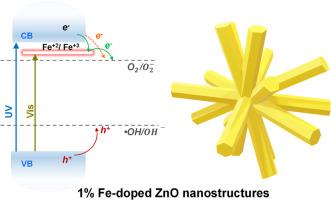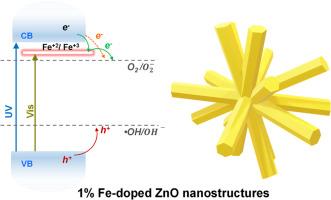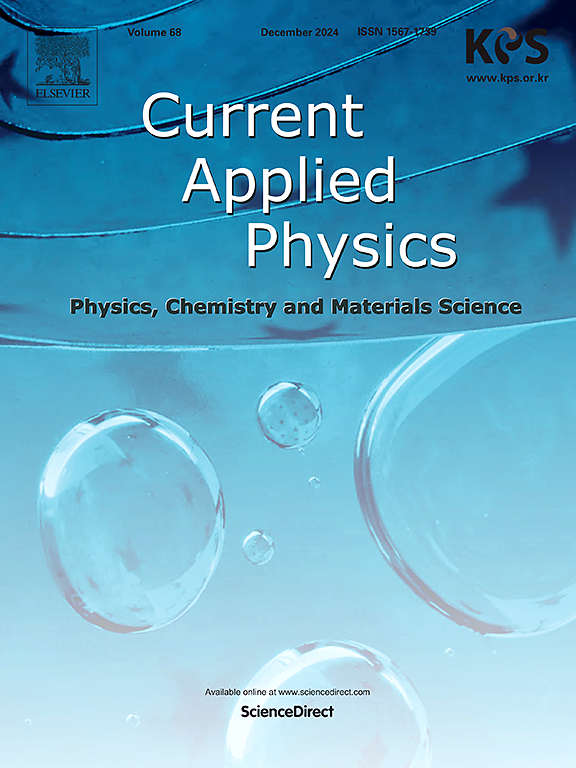Interlinking the Fe doping concentration, optoelectronic properties, and photocatalytic performance of ZnO nanostructures
Abstract
Doping is one of the effective strategies to modulate the optoelectronic properties and photocatalytic activity of photocatalysts. In this study, the effect of Fe doping (0–10 %) on morphology, optical and electronic properties, and photocatalytic activity of ZnO nanostructures is studied. The X-ray diffraction analysis shows that >5 % Fe doping, ZnFe2O4 is segregated as a secondary phase. The crystalline size decreases from 50.8 nm to 21.4 nm and the micro-strain increases with increasing the Fe concentration. The Fe doping-induced electronic restructuring facilitates visible light absorption through the O 2p → Fe 3d transition and the suppression of charge recombination by efficiently trapping conduction band electrons. Density functional theory (DFT) calculations are employed to unravel the underlying electronic changes induced by Fe doping in ZnO. The formation of shallow donor levels below the conduction band originates from the Fe 3d state. Photoluminescence spectra of pristine and Fe-doped ZnO nanostructures show characteristic emission peaks at approximately 384 nm and 570 nm, indicating the recombination of free excitons and oxygen interstitial defects, respectively. The results of the photocatalytic activity tests confirm that the 1 % Fe-doped ZnO nanostructures can exhibit the highest efficiency compared to the heavily doped ZnO nanostructures. The high efficiency in photocatalytic activity of 1 % Fe-doped ZnO nanostructures is ascribed to the modulated electronic structure and defect density. The adsorption affinity of methylene blue and water molecules to the surfaces of pristine and Fe-doped ZnO is simulated using the Monte-Carlo method. This study emphasizes the importance of controlling the dopant concentration to enhance the photocatalytic activity of various photocatalysts.



 求助内容:
求助内容: 应助结果提醒方式:
应助结果提醒方式:


